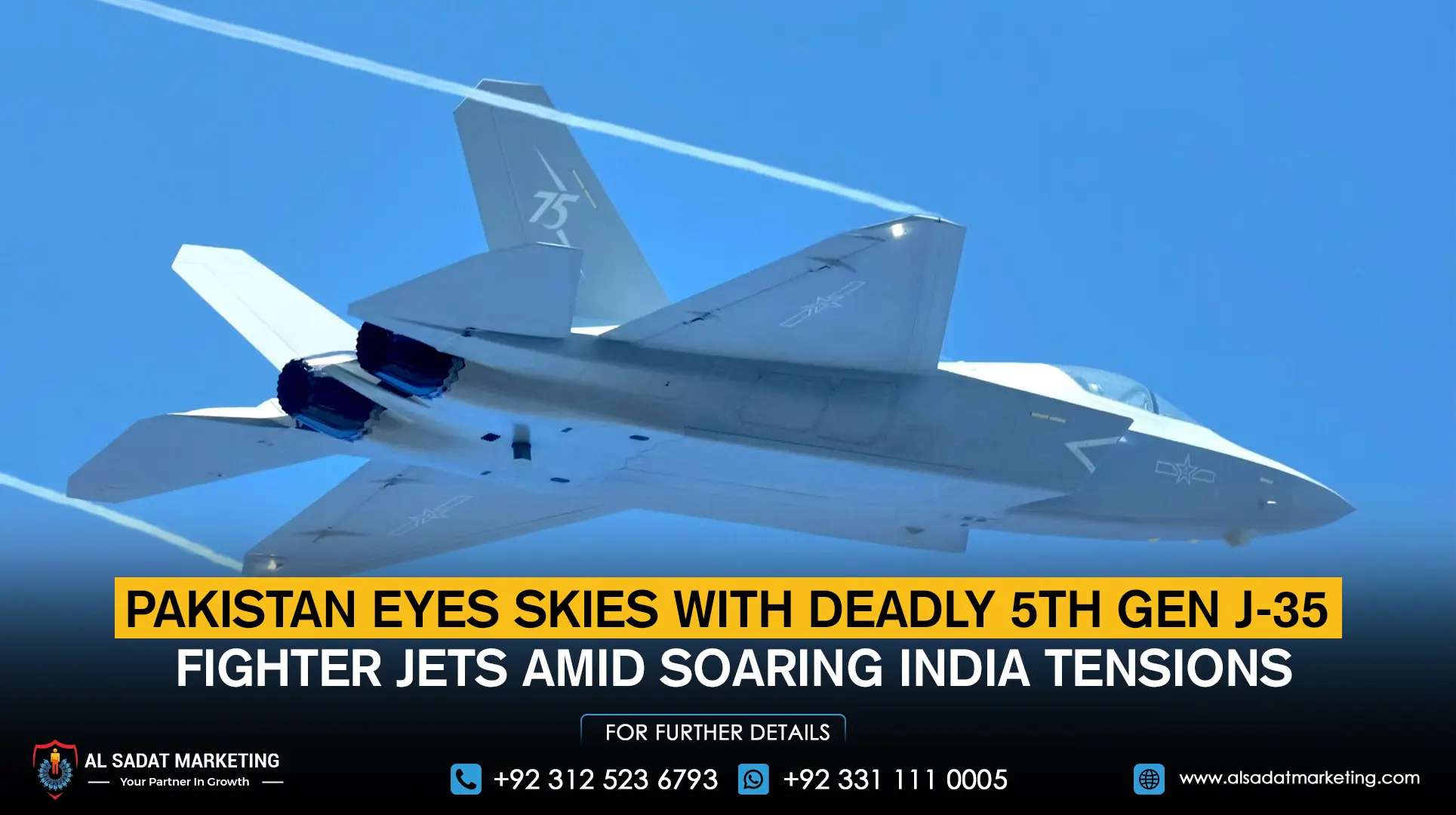Pakistan is gearing up to redefine its aerial defense as it prepares to induct China’s next-generation stealth fighter jet, the J-35, into its fleet in early 2026. The move comes at a time of heightened tensions with India, following a series of missile incidents and the reported loss of several Rafale jets—marking a critical shift in the region’s strategic balance.
The J-35, a 5th-generation multi-role fighter developed by China’s Shenyang Aircraft Corporation, is built for dominance in modern warfare. With its sleek stealth design, powerful dual engines, and cutting-edge AESA radar systems, the aircraft offers unmatched agility, deep penetration capabilities, and minimal radar visibility. It is engineered for survivability and supremacy in contested airspace, giving it a decisive advantage in high-threat combat environments.
Pakistan’s decision to acquire the J-35 reflects a broader strategic vision—one aimed at not just keeping pace with evolving threats but staying a step ahead. The aircraft’s integration will significantly enhance the Pakistan Air Force’s strike potential and reconnaissance capabilities, making it one of the most formidable air fleets in the region.
Also Read: Trump Roars: ‘America Will Build Tanks, Not T-Shirts!’
Training programs for Pakistani pilots are already in progress in China, ensuring seamless transition and rapid deployment once the aircraft arrives. Defense experts suggest this timeline underscores Pakistan’s urgency to solidify its deterrence posture amid growing regional uncertainty.
This high-stakes defense upgrade is also a signal of deepening military ties between Pakistan and China. The two allies have recently held several high-level security dialogues, aligning their defense goals and accelerating technology transfers in sensitive sectors. The J-35, in this context, is more than just a weapon system—it’s a symbol of strategic trust and long-term collaboration.
Once deployed, the stealth jet is expected to transform Pakistan’s air power dynamics, enhancing its ability to detect, evade, and strike with surgical precision in any conflict scenario. With battlefield awareness, radar evasion, and multi-role attack capabilities, the J-35 is poised to give Pakistan a new edge in the skies.
As global attention turns toward South Asia’s shifting military landscape, Pakistan’s bold leap into 5th-generation aerial warfare with the J-35 marks a turning point—one that could reshape the balance of power and redefine how future conflicts are fought in the region.










